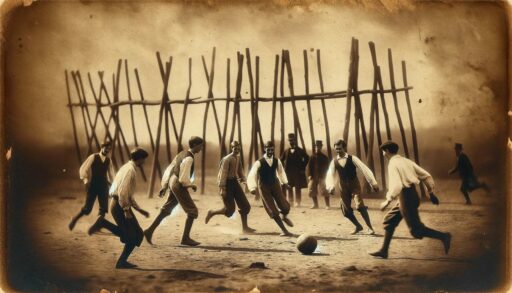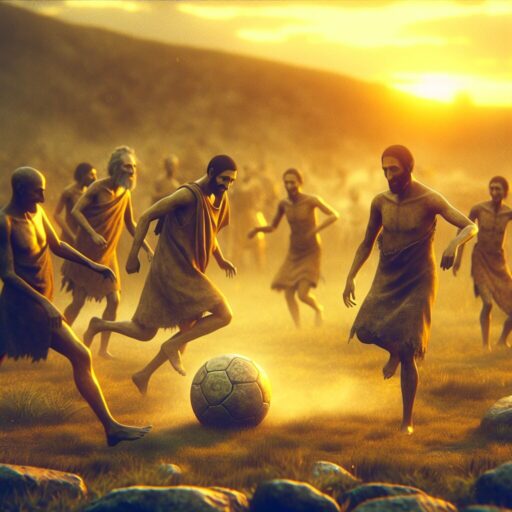Soccer, a game that ignites passion across continents, didn’t just appear out of thin air. Its origins are as intriguing as the sport itself. If you’re curious about who invented the global phenomenon known as soccer in some corners of the world, this exploration will shed light on its historical roots. Delve into a tale woven with cultural threads from ancient civilizations to modern-day pitches where the beautiful game continues to evolve.
Ever wondered how soccer went from humble beginnings to dominating sports headlines? You’re in for a treat. We’ll trace the ball back through time, uncovering the pioneers who shaped the game we can’t get enough of today. Expect to discover fascinating tidbits about soccer’s forefathers and how different cultures played their part in crafting the rules that guide every thrilling match. So grab your favorite snack and settle in; it’s time to unravel the story of soccer’s inception and its journey to becoming the world’s beloved pastime.
Important Highlights
1. Soccer’s origins are ancient, with various forms of the game played as far back as 2,000 years ago in countries like China, Rome, Greece, and parts of Central America. The Chinese game of Cuju is often credited as the earliest form of soccer, where players aimed to kick a ball through an opening without using their hands.
2. The modern version of soccer, or association football as it’s formally known, was developed in England during the 19th century. Before this standardization, the game varied widely with different sets of rules depending on the school or region, often leading to confusion and difficulty in playing matches between different areas.
3. The formation of the Football Association (FA) in England in 1863 marked a pivotal moment in soccer history. This governing body established a standardized set of rules for the sport, which helped to distinguish it from rugby and other similar games that were popular at the time.
4. International recognition and expansion came after these standardizations when matches began to be played across borders. FIFA (Fédération Internationale de Football Association) was founded in 1904 to oversee international competition among the national associations of Belgium, Denmark, France, Germany, the Netherlands, Spain, Sweden, and Switzerland.
5. Soccer has evolved significantly since its inception with advancements such as goal nets introduced in 1891, red and yellow cards introduced in 1970, and technology like VAR (Video Assistant Referee) being implemented more recently to assist referees with difficult decisions during matches.
The Origins of Modern Soccer
The game we know as soccer, or football as it’s called outside North America, didn’t emerge from a single inventor but rather evolved over centuries. The earliest forms of soccer-like games can be traced back to ancient cultures, with the Chinese game of Cuju being one of the oldest recognized precursors. These early games had varying rules and were played in different ways across the globe.
Rules Standardization and the Formation of The Football Association
In 1863, a significant milestone occurred in England with the establishment of The Football Association (FA). This governing body aimed to unify various soccer rules that existed at different schools and clubs, creating a standardized set of regulations known as the Laws of the Game. This pivotal moment is often credited with formalizing modern soccer.
Codification and Spread Internationally
Once established in England, soccer quickly spread internationally through British influence. Clubs formed around the world, and international matches began taking place. FIFA (Fédération Internationale de Football Association) was founded in 1904 to oversee international competition among national associations.
Contributions to Soccer Development
Numerous individuals made contributions to soccer’s development. Charles Alcock is notable for organizing the first official international match between England and Scotland in 1872. Ebenezer Cobb Morley is often referred to as the father of modern soccer for his role in establishing FA rules.
Evolution of Equipment and Attire
Soccer balls have evolved from inflated animal bladders to sophisticated aerodynamic designs made from advanced materials. Similarly, players’ attire has transitioned from casual daywear to specialized sportswear engineered for performance.
Influence on Culture and Society
Soccer’s impact extends beyond sports; it influences global culture and society. Major tournaments like the FIFA World Cup unite people worldwide in celebration of their love for the game.
Soccer Tactics and Strategies
Tactical evolution is an integral part of soccer history. From the early days of unorganized play to contemporary strategic formations like 4-4-2 or 4-3-3, these tactics reflect a deep understanding of teamwork and strategy within the sport.
Women’s Soccer Emergence
Women’s participation in soccer has faced historical challenges but has seen significant growth in recent decades. The establishment of women’s leagues and competitions demonstrates the game’s expanding inclusivity.
Soccer Training and Education
Training methods have progressed from informal kickabouts to structured academies dedicated to nurturing talent with advanced coaching techniques emphasizing physical fitness, technical skills, and tactical awareness.
Technological Advancements in Soccer
Technology plays an increasing role in soccer, from video-assisted refereeing (VAR) systems improving decision accuracy to wearable tech monitoring player performance.
The Future Outlook for Soccer
As innovations continue shaping sports, future developments may include further advancements in player health monitoring, fan engagement through virtual reality experiences, or alterations to rules enhancing game dynamics.
- What Are Some Effective Soccer Training Drills?
- How Can One Improve Their Tactical Understanding of Soccer?
- What Steps Should Be Taken To Start a Local Soccer Club?
- What Are Key Considerations When Choosing Soccer Equipment?
- How Does One Stay Updated on Changes Within International Soccer Rules?
Frequently Asked Questions
Where did soccer originate?
Soccer, as we know it today, began in 19th-century England. It evolved from various games played around the world and became standardized with a set of formal rules.
Did the English really invent modern soccer?
Yes, the English are credited with formalizing the modern game of soccer, establishing the first official rules in 1863 through The Football Association.
Were there early forms of soccer before England’s version?
Absolutely! Games resembling soccer were played in China, Greece, Rome, and parts of Central America centuries before it took shape in England.
What role did public schools play in soccer’s creation?
Public schools in England were instrumental in the game’s development, unifying various regional rules into a more consistent format that later influenced The Football Association’s regulations.
Is rugby related to soccer?
Rugby and soccer share common roots but diverged when The Football Association emphasized kicking rules over handling ones, leading to separate sports.
How has the game evolved since its invention?
The game has seen numerous changes, including refinements in equipment, pitch dimensions, and rules like offside or substitutions to enhance fairness and excitement.
Who can claim credit for specific aspects of the game?
No single individual can claim credit; it was a collective effort by clubs and schools to standardize different playing styles into what we now recognize as soccer.
Are there other names for soccer worldwide?
The sport is commonly called ‘football’ outside North America, where ‘soccer’ distinguishes it from American football.
Did FIFA have a role in shaping modern soccer?
FIFA, established in 1904, further standardized the rules internationally and organized major competitions like the World Cup, contributing greatly to its global spread.
Has the original spirit of soccer remained intact?
The essence of the game—teamwork, skill, and strategy—endures despite its growth into a global phenomenon with professional leagues and international tournaments.
Reflecting on Soccer’s Heritage
Soccer’s journey from ancient fields to modern stadiums is a testament to its universal appeal. The simple joy of kicking a ball has transcended cultures and eras. While England might have given it structure, every corner of the globe has shaped its spirit. Today’s matches are far-removed cousins of those first organized games; yet at their core lies an unchanged love for what many consider the beautiful game.
In pondering who invented soccer, we embrace not just a country but humanity’s collective ingenuity. As we cheer our favorite teams today, we are partaking in history—a living legacy crafted by countless unnamed players who had one thing in common: a passion for playing with a ball at their feet. This shared heritage is what truly makes soccer ‘the world’s game’.


